|  | | As Mexicans headed to the polls in June, families searching for their loved ones called on voters to fill out their ballots by writing the name of a disappeared person. “Let’s not allow them to keep disappearing disappeared people,” the campaign’s website declared. “In this electoral process, let’s make them present at the ballot box.” |
| Disillusioned with the lack of answers offered by the current and former governments, the initiative sought to draw attention to the country’s forensic crisis and the absence of the disappeared from the electoral debate. “Will you help us search for them?” the campaign asked. “¿Dónde están? Where are they?” That question—so familiar across the continent—is at the heart of our latest issue of the NACLA Report. “¿Dónde están?” connects the dots between past and present, linking ongoing forms of disappearance in the region today to the U.S.-backed state violence of decades past, while spotlighting persistent efforts to unearth the truth. “Disappearance cuts through the societies of the Americas,” guest editor and Central America Studies scholar Jorge E. Cuéllar writes in the introduction, “telling us much about the pain, grief, and emotional life of the region’s struggle for justice.” Passing through hotspots, from the U.S.-Mexico borderlands to Colombia to Argentina, this issue brings together researchers, journalists, activists, artists, and a desaparecido himself to tell eye-opening stories that plumb the depths of disappearance and its afterlives. Disappearance, here, is broadly conceived. It manifests not only in familiar forms of state violence but also as ecocide, femicide, transphobia, and archival silences, invariably spanning both institutions and intimate spaces. |
|
|
| The 17 themed articles of this issue lay bare how disappearance functions as a tool of terror and explore the varied ways of accounting for and responding to the crisis. Whether through public art projects in Mexico, ex-combatant-led search brigades in Colombia, or new storytelling formats in Central America, families and advocates across the continent are pushing back against erasure. This issue builds on our previous two NACLA Reports, “Militarized Democracy Refracted” and “Latin America’s Far Right Reborn.” The re-emergence or persistence of forced disappearance explored in these pages comes against the backdrop of rising authoritarianism, while armed forces continue to stymie quests for truth and justice by covering up their past and present violence. As Cuéllar writes: “Across the region, societies now facing an erosion of their human rights protections are the same societies that remain indelibly marked by past episodes of militarized repression.” |
|
|
| The pieces on Central America—highlighting the landmark Diario Militar case in Guatemala, continuities of state violence in El Salvador, present-day disappearance in Honduras, and transnational adoption—pick up crucial threads from our podcast Under the Shadow, hosted by multimedia journalist (and former NACLA editor) Michael Fox. Episodes 3, 4, and 6 give special attention to the disappeared in 1980s Guatemala, El Salvador, and Honduras. Finally, in a glimpse of justice amid so much impunity, since the publication of this issue, a Peruvian court convicted 10 military men of crimes against humanity for systematically raping Quechua women in the communities of Manta and Vilca during the country’s armed conflict. Peruvian anthropologist María Eugenia Ulfe highlights the case in her piece on femicidal disappearance. Following the work of Forensic Architecture, the search for the disappeared is an exercise in piecing together various traces, or what Colombian researcher Oscar Pedraza describes as “flashes of presence” amid absence and obscurity. “When the flashes of light cease to illuminate,” Pedraza reminds us, “a search reaches a moment of suspension—not an end, for there is movement in darkness.” |
|
|
| The articles of this NACLA Report grippingly show that the crisis of the disappeared remains unfinished. Forced disappearance, as Cuéllar describes, holds “a structuring power that is spectral and deeply material,” unleashing a “cluster bomb effect” on victims and their wider communities. We hope the issue contributes to these communities’ efforts to “powerfully reclaim the disappeared from the abyss of the unknown.” In addition to the print magazine, this robust issue includes a series of web exclusive articles as well as a selection of pieces available in Spanish. Keep scrolling to explore key pieces—some freely available only for a limited time. Looking ahead, our Fall 2024 issue of the NACLA Report will explore plurinationalism from below. Then, we’re especially excited about our Winter 2024 issue focused on the crucial theme of Palestine solidarity and Israeli ties across Latin America. Not yet a subscriber? Subscribe now to receive the Fall and Winter 2024 issues in print! |
| |
|
|
|
|  | Reappearing the Memory of Mexico’s Twice Disappeared Sergio Beltrán-García As the government hides the staggering proportions of Mexico’s forensic crisis, the searching families of the project El Bosque de la Esperanza take control of their own narratives to resist stigmatization and erasure. |
|
|
| 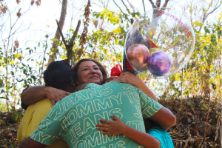 | Narrating the Distance of Transnational Adoption Nathan Rossi For transnational adoptees wrenched from El Salvador and Guatemala in the throes of civil war, storytelling and art are powerful tools for navigating identity, dislocation, haunting, and healing. |
|
|
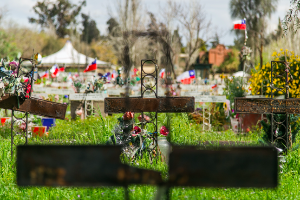 | The Double Disappearance Inside Chile’s Patio 29 Constanza Dalla Porta Exhumation of a mass grave in Santiago finally promised answers, but botched DNA testing left the families of victims reeling. Five decades later, the search for truth continues. |
|
|
| | 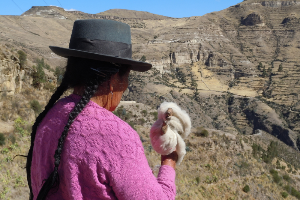 | Desaparición feminicida en Perú María Eugenia Ulfe En las luchas por la justicia, desde el conflicto armado interno hasta la violencia de género hoy, la impunidad de estos crímenes es constante. Callarse es también una forma violenta de desaparecer a las víctimas. |
|
|
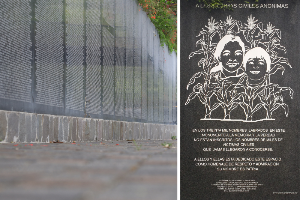 | De estado de guerra a régimen de excepción Yaneth Martínez, Ana Julia Escalante, Jaime López, Pablo Benítez y Jorge E. Cuéllar La detención arbitraria en El Salvador evoca la memoria dolorosa de la desaparición forzada. Defensores de derechos humanos y activistas conectan los puntos. |
|
|
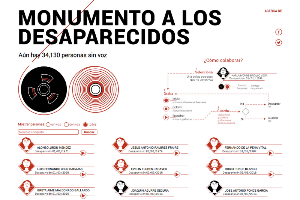 | Arte contra el olvido en México Leonardo Aranda Brito y Dora Ytzell Bartilotti Bigurra Cuando la historia de la desparición forzada en México se cuenta en cifras, carece de un principio o un fin. Prácticas artísticas de resistencia buscan hacer visible la ausencia. |
|
|
| 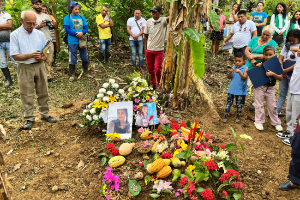 | “No nos callaremos ante nuestros verdugos” Moira Birss En una comunidad colombiana dedicada durante mucho tiempo a la no violencia y la defensa ambiental, dos asesinatos subrayan los desafíos que enfrentan los planes del gobierno de izquierda para una paz duradera. |
|
|
| | Under the Shadow Michael Fox Under the Shadow uncovers the history of U.S. intervention in Central America and its lingering effects today. Episodes 3, 4, and 6 give special attention to the disappeared in Guatemala, El Salvador, and Honduras. Listen on Spotify, Apple, or wherever you find podcasts. |
|
|
| | | | | | | |
|
| | North American Congress on Latin America
53 Washington Sq South, Fl. 4W | New York, New York 10012
(212) 992-6965 | info@nacla.org |
| |
|
| |
|
|